14.1 – Lead – some history, some basics.
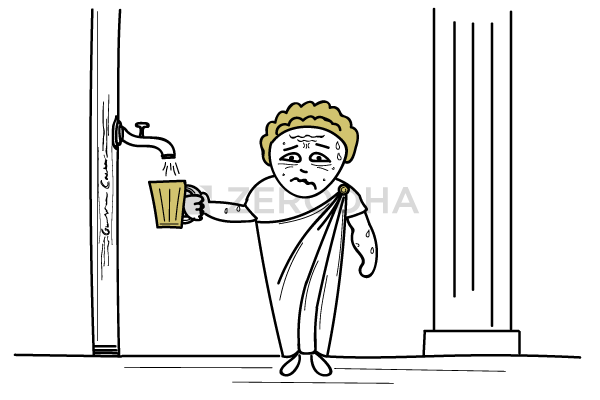
Would you believe, if I said that ‘Lead’, as in the metal Lead, played a role in bringing down the Roman Empire? Not Gold nor Silver, not diamonds or rubies – but lead, which is found in abundance.
Don’t worry; I don’t intend to make this a history lesson! However, lead and the Roman Empire are somewhat related, and I’d like to take this opportunity to share this interesting information with you.
I don’t intend to take too much of your time – here is an interesting perspective of how lead could have acted as a catalyst to the fall of the mighty Roman Empire.
The characteristics of Lead make it a unique metal –
- It’s a lustrous heavy metal.
- Highly malleable and ductile
- Poor conductor of electricity
- Quite resistant to corrosion
- Very dense
- Reasonably available
The lead was discovered and has been in use since prehistoric times. In fact, lead is the earliest metal discovered. Lead figurines found in Egypt that date back to 4,000 BC are testimony to this. Perhaps, the most popular use of lead and therefore the peak of lead production was during the Roman Empire. Romans used lead extensively, especially as water pipes, aqueducts, tank linings, cooking pots, and even as cosmetics.
In fact here is a picture on a Roman-era water pipe –
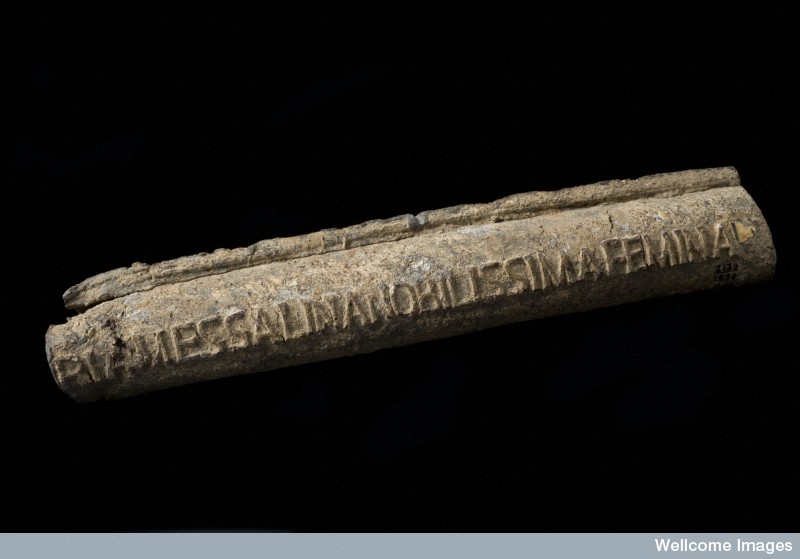
Source: Welcome Images, UK.
Apparently, during the Roman era, it was a considered ‘aristo’ to have water pipes running into the residence, directly plumbing water. The owner’s name was inscribed on the lead water pipe (you can notice this on the picture as well), to showcase the aristocracy. Talk about customized water pipes. ☺
Romans gradually paid the price for such extensive use of lead. Lead, unlike iron, has no use for the human body. It is toxic and carcinogenic. The extensive use of lead, especially as water pipes proved to be fatal. Lead poisoning eventually claimed the lives of many people – especially people from the higher strata, involved in decision making. This mass loss of lives is believed to have played a crucial role in the eventual collapse of the Roman Empire.
Well, there you go, that’s about it – I’m not a historian, so if you want to know more, I’d advise you to do your research on this, and here is an interesting link to get started.
Humans have evolved since the Roman era, and we have put lead to better use since then. Here is a wide variety of uses for lead –
- Solders
- The industrial lining of sinks, tanks, chambers
- Protective shield against radiation
- Lead-acid storage batteries (largest application of lead)
- The lead foil used for covering cables
- Pigments and compounds
- Shipbuilding
By the way, many people think of ‘lead’ and immediately imagine the pencil lead found at the tip of the pencil. Although the one found in a pencil is called a lead, it is not lead. It is graphite.
The supply-demand of lead has more or less been stable over the last few years, have a look at the data below –
Source: www.ilzsg.org
In fact, the price of lead has more or less remained range-bound over these years. Have a look at the long term chart of Lead; do pay attention to the last few years –
If you intend to trade Lead futures on MCX, then it pretty much has to be a play on price action. I would personally refrain from setting up trades based on news or fundamentals for Lead.
However, if you do plan to set up trades based on fundamentals, click here to get all the fundamental data –
14.2 – Contract Specifications
Let’s take a quick look at the contract specifications. Like many other commodities listed on MCX, Lead to comes in two variants – Lead (big contract) and Lead Mini. Let me list down the contract specs of the big Lead first and then look into Lead Mini.
The specs are as below –
- Price Quote – Per kilogram
- Lot size – 5 metric tonnes (5000 kgs)
- Tick size – Rs. 0.05
- P&L per tick – Rs. 0.05 * 5,000 = Rs. 250/-
- Expiry – Last day of the month
- Delivery units – 10 MT
Here is the snap quote of the Lead contract expiring in Jan 2017 –
The price, as seen here, is Rs. 137.05 per Kg. Therefore the contract value would be –
Lot size * price
= 5,000 * 137.05
= Rs. 685,250/-
The NRML margin is as shown below –
As you can see, the NRML (for overnight positions) margin is Rs. 80,482/-and MIS (for intraday) margin is Rs. 40,241/-.
This makes it about 11.7% for NRML and about 5.9% for MIS, clearly one of the highest margin requirements in the commodities market.
And now for the Lead Mini contract –
- Price Quote – Per kilogram
- Lot size – 1 metric ton (1000 kgs)
- Tick size – Rs. 0.05
- P&L per tick – Rs. 0.05 * 1,000 = Rs. 50/-
- Expiry –Last day of the month
- Delivery units – 10 MT
Here is the snap quote of Lead Mini, expiring in Jan 2017 –
The price, as seen here, is Rs.137.50 per Kg. The contract value, therefore, would be –
Lot size * price
= 1,000 * 137.50
= Rs. 137,500/-
The NRML margin is as shown below –
As you can see, the NRML margin is Rs. 16,442/-and MIS margin is Rs. 8,221/-.
This makes it about 11.7% for NRML and about 5.9% for MIS. The margin for Lead Mini (for both NRML & MIS) is similar to the margins charged for a Lead big contract. However, because the lot size is smaller, the financial outlay towards margins is a lot lesser.
14.3 – Lead contract logic
MCX introduces new contracts every month, and each new contract introduced expires on the last day of the 5th month. For example, in January 2017, MCX will introduce May 2017 contract. The May 2017 contract will expire on the last working day of May 2017.
Note, the January 2017 contract would itself expire on the last working day of January 2017. Further, as you can see in the table below, the January contract would have been introduced 5 months prior, i.e., in September 2016.
This introduction pattern ensures that there is a current month contract available at any point in the system.
Have a look at the table below –
Although the contract is commissioned 5 months before expiry, it gains liquidity only in its last month. Therefore, it makes sense always to trade the current month contract. Remember, higher liquidity means tighter bid-ask spreads, tighter spreads means lower impact cost, lower impact cost means, less damage, especially when you place market orders.
14.4 – Nickel basics
Nickel and its alloys find extensive used in our day to day lives. Be it kitchenware, mobile phones, medical equipment, building, power generation, or even transport – Nickel is almost always used, either directly or as an alloy. The largest application of Nickel has to be in the manufacturing of stainless steel. In fact, about 65% of nickel produced is used towards the manufacturing of stainless steel.
Here is the ‘demand-supply’ situation of Nickel –
As you can see, Nickel production has overtaken demand. This probably explains why Nickel prices have been down over the year –
Again, my advice when it comes to trading Nickel would be the same – trade the price and not really the fundamentals.
14.5 – Contract Specifications of Nickel
No prize for guessing, Nickel to comes in two variants – Nickel (big contract) and Nickel Mini. Let me list down the contract specs of the big Nickel first and then look into Nickel Mini.
Nickel (big) specs are as below –
- Price Quote – Per kilogram
- Lot size – 250 Kgs
- Tick size – Rs. 0.10
- P&L per tick – Rs. 0.10 * 250 = Rs. 25/-
- Expiry – Last day of the month
- Delivery units – 3 MT
Here is the snap quote of Nickel, expiring in Jan 2017 –
The price as seen here is Rs. 685.50 per Kg. The contract value, therefore, would be –
Lot size * price
= 250 * 686.5
= Rs. 1,71,625/-
The NRML margin is as shown below –
As you can see, the NRML (for overnight positions) margin is Rs. 16,924/-and MIS (for intraday) margin is Rs. 8,462/-.
This makes it about 10% for NRML and about 5% for MIS.
And now for the Nickel Mini contract –
- Price Quote – Per kilogram
- Lot size – 100 kgs
- Tick size – Rs. 0.10
- P&L per tick – Rs. 0.10 * 100 = Rs. 10/-
- Expiry – Last day of the month
- Delivery units – 3 MT
Here is the snap quote of Nickel Mini, expiring in Jan 2017 –
The price as seen here is Rs. 686/- per Kg. The contract value, therefore, would be –
Lot size * price
= 100 * 686
= Rs. 68,600/-
The NRML margin is as shown below –
As you can see, the NRML (for overnight positions) margin is Rs. 6,694/-and MIS (for intraday) margin is Rs. 3,347/-.
This is consistent with the big contract – works out to 10% for NRML and about 5.0% for MIS.
The contracts are introduced every month, in the same way as Lead. I’d suggest you stick to the current month contract for trading as these contracts have the highest liquidity.
Key takeaways from this chapter –
- There are two contracts for Lead Futures; Lead and Lead Mini.
- Lot size of Lead is 5000 MT, and Lead Mini is 1000 MT.
- P&L per tick is Rs. 250 for Lead and Rs. 50 for Lead Mini.
- ‘Demand supply’ has remained stable for Lead over the last few years.
- There are two contracts for Nickel futures; Nickel and Nickel Mini.
- Lot size of Nickel is 250 Kgs and 100 kgs for Nickel Mini.
- P&L per tick is Rs. 25 for Nickel and Rs. 10 for Nickel Mini.
- Nickel production has outstripped its demand.
- It is advisable to stick to the current month futures of both Lead and Nickel.
- It makes sense to look at price data to place short term trades in both Lead and Nickel.


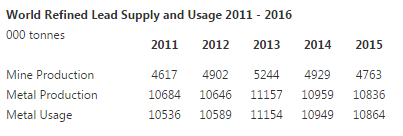
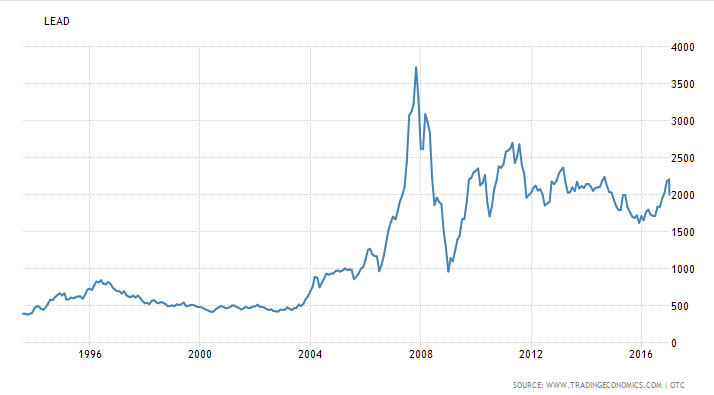
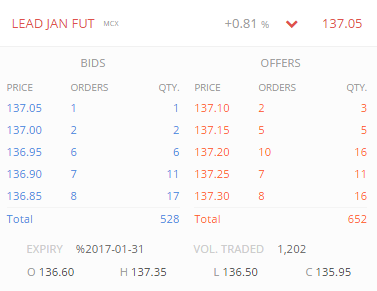



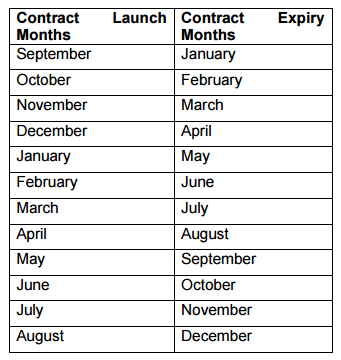
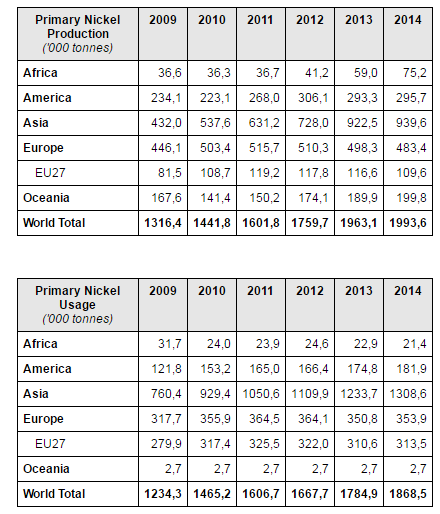

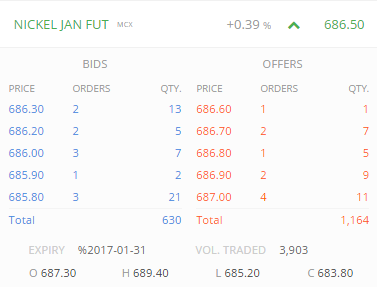

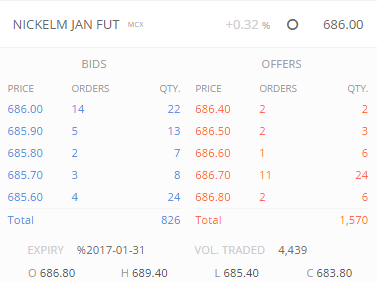

I checked the link you provided for looking at lead prices in previous reply but no information is available there for lead contracts the \”last price\”, \”change\” is blank but if we check the price for other metals on the page from the dropdown on the right hand side the information the same information is available and is also getting updated regularly
Ah, not sure Shivansh. I\’ve not been tracking Lead prices these days. Here is one more thing you can do – search for listed companies which are into Lead manufacturing, dig their annual report, and look for Management Discussion and Analysis. There they would have mentioned about the lead prices and the relevant exchange.
I checked the lead prices on investing.com there the prices are different from what was on tradingview even the contract name was different and under the exchange it showed \”derived\” not LME and I also checked on LME.com there the lead prices are also different
Check this – https://www.cmegroup.com/markets/metals/base/lead.html
I checked it on LME for lead prices but the 1 day chart available is like that nothing can be interpreted from it (contract symbol – PB1!) can you please confirm that if I am looking at the right one or not and I checked the chart on tradingview
You can even check on investing.com for this.
1. I use CME(Chicago mercantile exchange) for gold & silver price reference. But I\’m having a hard time finding lead prices for reference can you please tell how can I get foreign market lead prices for reference.
2. And is it relevant to look at foreign markets, cause for gold and silver I\’ve noticed it really helps as it gives an overview of the market when MCX is closed
1) Can you check LME once?
2) Its good to know, especially since these are international commodities.
that looks like how they make whiskey or sumn
You are more or less correct 🙂
Hi sir, i m new at zerodha & commodity market as well…..
My question is …. 1. suppose i buy leadmini april contract hold till expiry.. (Buy price is 142 & at expiry date price is 136) for 1 lot… in this case their is loss …..can is shift this month contract to next month ?? or i have to book a loss.?
2. How this commodity market work …. in leadmini case i observed that sometime price move 7 rs up & down …..how this movement take place.? I notice that their was 100% seller only sometime……. after within hour it again start moving upward.. .is this a right time to buy to avoid any kind of loss?
3. Can you suggest some method or things to focus before taking a buy or sell call.?
1) You will have to book loss and renter the position if you really want
2) Market dynamics, just like it is for any other commodity
3) You can look at Technical Analysis
Hi,
is there any iron ore contract available in exchange. If not where i can find iron ore chart.
No, that\’s not available Barun.
I want to watch lead chart for last one year, how can i do that in zerodha kite?
Open a current month chart, click on Display and click on \’Continuous Data\’ option(Check this screenshot).
Note: This is only available for daily candle chart
Hi,
This continuous data refers to spot price i guess??
No, futures.
Hi Sir,
this is connection with buy of ZINC lot \”buy\” yesterday, in march 30 expiry, but same was not able to sell before 1730 hrs yesterday, and still position is showing \”open\” please advice when this position will be closed, will it be auto squared off?
It will be auto squared off. Not to worry.
Hello Sir,
I am trading commodity futures for a while and grateful for your help with the details.
I have by mistake taken an entry in NickelMini March contract today, considering 30th March is expiry.
Trading suddenly stopped at around 5.30 pm India time.
Now my commodity account shows -118000 in balances.
I made some search but only could see cash settlement, and not physical dilivery.
I did not understand it and also need to ensure that I do not buy Nickel in physical form.
Can you please help me in understanding the situation, and also guide for actions to be taken?
Thanks,
Dnyanesh
We only have the cash settlement of commodities at Zerodha and hence we don\’t really allow trading during the tendering phase. Don\’t worry, there is no physical delivery obligation.
Sir. Please help. I am new in to commodity and contract expiry
Scenario 1: If i buy 1 lot of ZincMini on 15th. (assuming price 210) As we know Zinc future contracts expires at the end of every month. I am taking positional trading here .
(1) I want to sell this 1 lot say on 25th of next month – is it possible?. (assuming price 214)
(2) Once sold will i get my margin increased on the same day to purchase additional lot?
(3) What is the delivery time for commodity
(4) How long can we retain commodities purchased?
1) Yes, as long as you have bought the next month\’s contract
2) Yes, you will need additional margin with an increase in the number of lots
3) No physical delivery of commodity when you trade with Zerodha
4) Until the expiry (I\’m assuming you are referring to the futures contract here).
Beautifully written and very well articulated.when teaching is like this l,no student will bunk classes,which I did many times in my school\’s:-)
Happy learning, Basu 🙂
Sir I have a silly question, never traded in commodity markets, so the question.
1)Why do commodities have different expiry dates, even when they are traded on same exchange.
2) Is the expiry date dynamic or static for a commodity. Means can the expiry date of 2 consecutive contracts be different.
3) Are expiry dates calculated with some particular set of rules and standards.
Thanks for taking up the question.
1) I\’d suspect this has something to do with international cycles
2) No, there are preset date formulas
3)Yes
Hello Karthik,
In keytakeways below statement looks like incorrect…
\”Lot size of Lead is 5000 MT and Lead Mini is 1000 MT.\”
It should have been either 5000KG and 1000KGS or 5MT or 1MT.
Please correct me if I\’m wrong.
Thanks,
Amey
OOps, will make the correction. Thanks for pointing this.
Is the ZINCMINI contract similar to Lead mini contract with respect to quotation, lot size, p/l
Need to look up for the Zinc contract for this…also, I believe Zinc is not too liquid.
Hi..Karthik…. plz do provide a chapter on IRF…..I am sure it will benefit many
Thanks, will try and do that as a supplementary note.
Thanks Again for enlightening us 🙂
Few corrections in attached images:
1)The image of snap quote of Nickle(big) is actually of NickelM Jan FUT.
2) The image of NRML margin of Nickel (big) is actually of snap quote of Nickel Jan FUT.
3) The image of Snap quote of Nickle Mini is actually of Nickel(big) NRML Margin.
Thanks for pointing this Ankit! We will sort this sort soon.
Lead history was really very astonishing. Very precise and informative narration about Lead & Nickel. when will Interest Rates trading will be covered?
Thank you 🙂
We are planning to skip IRF, there is hardly any trading/liquidity in the instrument. We will wind up commodities over the next 2 chapters and move ahead to Trading Psychology and Risk Management.
Dear Karthik Sir,
you are right that there is less liquidity in IRF but this is due to lack of knowledge and authentic source of information. You are our true apostle in share market. if you provide good knowledge on the subject, i am sure, trading in IRF instruments will be shoot.
If not possible to cover up the topic, please provide books/authentic source on the topic.
Lol 🙂
I\’m not sure if such a thing will happen, but will eventually add that bit as a supplementary note. Thanks.
Thanks for your concern but remember, Zerodha has increased its client base to 2L+ just because of positive attitude. even you guys have induces positive vibes among traders.
Its mutual 🙂